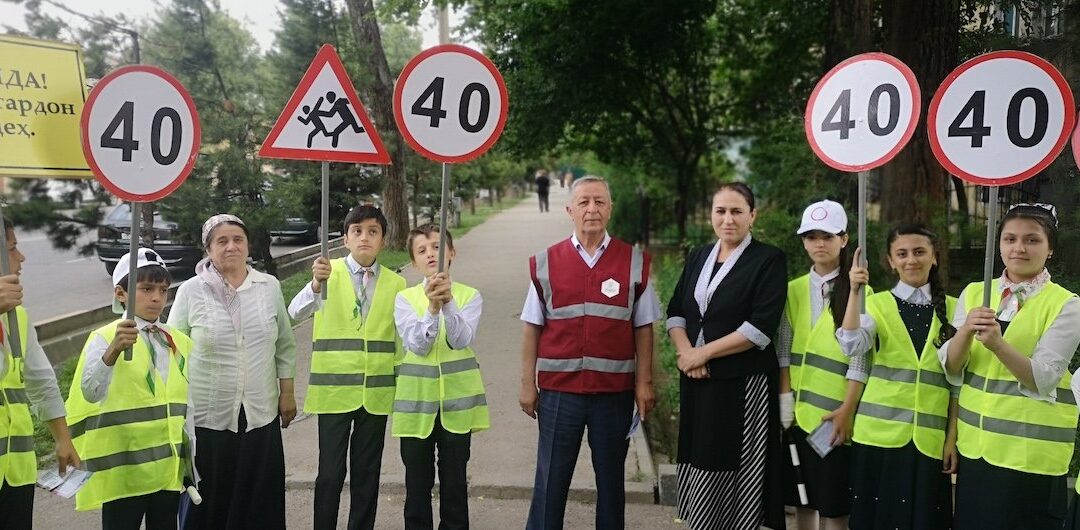Image credit: EASST
The Star Rating for Schools App has been used to help assess and improve road safety around schools in Tajikistan.
Original article published by Eastern Alliance for Safe and Sustainable Transport (February 2023)
In 2021, Tajikistan’s Traffic Police reported 85 child fatalities and 260 injuries due to road traffic crashes. Fifty per cent of crashes in total involved pedestrians and speed was recorded as a factor in over 65% of incidents. Children’s road safety in Tajikistan needs to be urgently addressed.
With Local Partner Young Generation of Tajikistan (YGT), the Eastern Alliance for Safe and Sustainable Transport have been working with the support of the FIA Foundation’s Advocacy Hub to address this issue.
EASST have been working with schools around the capital Dushanbe to lower speeds and improve infrastructure to make journeys to school safer for close to 10,000 children.
Three pilot schools were selected based on the high number of casualties recorded in nearby areas. Working with the Traffic Police, YGT set out to conduct speed measurements and assess the school zones’ safety infrastructure using the EASST School Zone Assessment Toolkit and the Star Rating for Schools App.
At each school YGT established a ‘Safe School Zone’ Committee involving members of the school leadership, parents, teachers, students, and representatives of the Traffic Police. Together, the committees analysed the results of the assessments and developed a set of recommendations to improve the situation.
All three of the schools are located near multi-lane highways. The speed limit past two of the schools was set at 60km/h and although the third school had a speed limit of 40km/h, operational speeds measured by YGT and the Traffic Police in April 2022 recorded an average of 53 km/h.
Starting in June 2022, YGT and Ministry of Internal Affairs began to implement changes. Firstly, speed limits around the two schools were reduced from 60km/h to 40km/h – the current recommended speed for school zones in Tajikistan.
New high visibility road signs were installed at each school informing drivers of the speed limits and that they are entering a school zone and zebra crossings were re-painted with high visibility paint.
At school number 4, rumble strips were added to the road to encourage drivers to slow down while an existing (but broken) pedestrian traffic signal was fixed at school number 1.
At school number 28, coverings were added to the drainage ditches as the side of the road to make the pavement accessible for people using wheelchair, bikes, and prams, as well as to prevent pedestrians from having to jump out into the road.
These small interventions were low cost and have made a significant difference but more work is required urgently to make roads in Dushanbe safe for everyone.
In October, YGT organised a Policy Dialogue meeting with representatives of the Traffic Police, road engineers from the Tajikistan Technical University, and other civil society organisations. During the meeting, YGT presented the results of their work around the three Dushanbe schools and called for more to be done at a city level, including the reduction of recommended speed limits around schools to 30km/h.
The Traffic Police agreed in principle to the notion of reducing speed limits in line with international standards, but first asked for more evidence through local pilot schemes. They also agreed to allocate a representative of their department to act as a permanent consultant to YGT on road safety issues, in particular addressing the need for similar infrastructure changes to be rolled out to more schools and kindergartens in the city.
This is an important step forward for addressing Tajikistan’s road safety crisis. As we move into 2023, we will seek to work on this further to ensure safer streets for children to travel to and from school.

